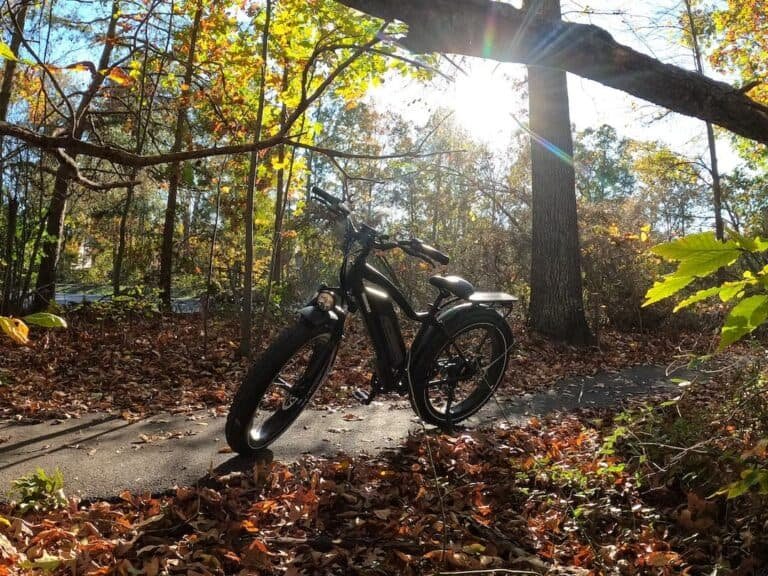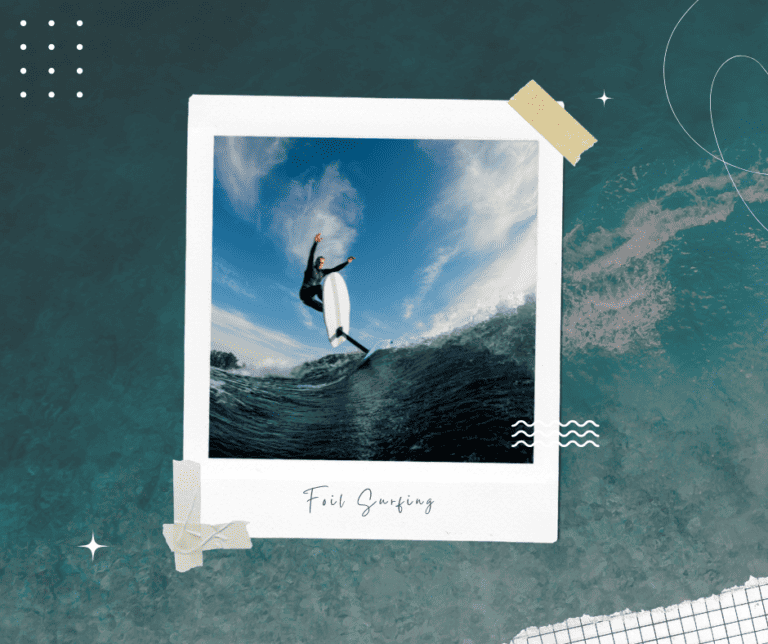Foil Board: A Complete Guide for Adventure Seekers!

Foil boarding has taken the world of water sports by storm, offering an unparalleled sense of freedom and excitement as you glide effortlessly above the water. If you’re considering joining the ranks of foil board enthusiasts, you’re in the right place. We’ve compiled everything you need to know about foiling boards, from the different types of boards and components to tips for improving your riding skills and maintenance advice.
In this guide, our goal is to provide you with a solid foundation of knowledge, helping you make informed decisions about the equipment and techniques that suit your needs and preferences. So let’s dive in and explore the exhilarating world of foiling boards!
Types of Foil Boards
When it comes to foiling, the equipment you choose can significantly impact your performance, comfort, and enjoyment. There are five primary types of foil boards available: freeride, race, surf, wakestyle and hydrofoil board. Each is designed for specific riding styles and conditions, ensuring there’s a perfect fit for everyone, from beginners to seasoned pros.
Let’s take a closer look at each type and its unique features.
Freeride Foiling Board
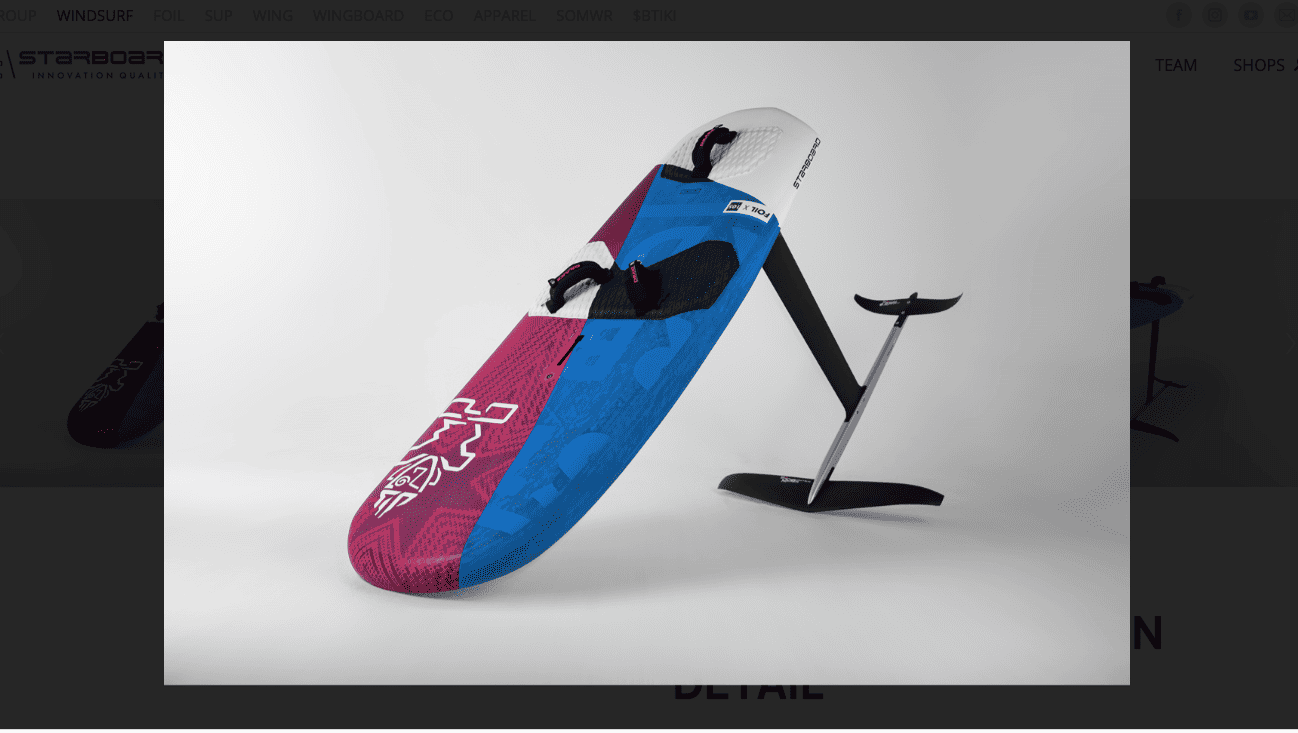
Foil X from Star-board
https://windsurf.star-board.com/windsurfing-boards/wave-freestyle-windsurf-boards/foil-freestyle-windfoil-board/
Freeride foil board are the ideal choice for recreational riders, offering a balanced combination of stability, maneuverability, and ease of use. These boards are perfect for learning and progressing in the sport, as their design features a low volume, forgiving outline, and large surface area, which facilitates takeoff and transitions. High rocker and beveled rails ensure smooth touchdowns and reduce the chance of nose-diving, while the rear strap adds security and control.
It can be used for kiteboarding, windsurfing, or wakeboarding. They’re typically designed to be more forgiving for beginners while still offering plenty of performance for more experienced riders to enjoy. This is achieved by a balanced design, which combines elements of other types of foil board.
Stability and Control:
These boards have designs that emphasize stability and control. They usually have a larger front wing for more lift and stability.
Versatility:
Freeride foil board are all-rounders, capable of handling different water conditions and suitable for different riding styles, from relaxed cruising to more aggressive maneuvers.
Ease of use:
These boards are often designed with beginners in mind, so they tend to be more comfortable and easier to ride. The foil setup is typically designed to make the board rise smoothly and predictably at lower speeds.
Progression:
Despite their beginner-friendly nature, freeride foil board are not just for beginners. Many are designed to allow for progression, with performance features that more advanced riders can take advantage of.
Race Foiling Board

https://www.patrikinternational.com/en/shop/windsurfing/windsurf-boards/patrik-foil-race.html
For competitive riders seeking optimal performance in racing conditions, race foil board are the way to go. These boards are designed for speed and stability, featuring a race-oriented outline and rocker, hard bevels in the bottom, a 4 to 3-stage hull bottom, and a carbon fiber stringer for reinforcement. Their lightweight and agile construction facilitates easy maneuverability, allowing you to dominate the racecourse.
Speed:
The primary goal of the race foil board is to achieve high speeds. This is accomplished through streamlined designs, high aspect ratio wings, and efficient profiles that reduce drag both in and out of the water.
Agility and Control:
At high speeds, maintaining control and the ability to make rapid, precise movements is crucial. Race foil board have features that facilitate this, like performance-oriented mast and wing designs.
Lightweight Construction:
To increase speed and maneuverability, race foil board are often made from lightweight materials like carbon fiber. However, these materials must also be strong and durable to withstand the high forces involved in racing.
Less Forgiving Design:
Race foil boards aren’t typically recommended for beginners. Their design prioritizes performance over stability and comfort, and their thin, sharp profiles can make them less forgiving and more challenging to ride.
Efficiency:
Race foils tend to have a high aspect ratio, which means the wings are long and thin. This shape is less draggy and more efficient, making it great for straight-line speed, but it can be less maneuverable and trickier to handle than a low aspect ratio foil.
Surf Foil Board

https://liftfoils.com/stories/lift-foils-2023-surf-and-wind-foil-board-lineup
Surf foil board are designed for riders who enjoy the thrill of riding waves. These boards offer a unique blend of stability and responsiveness, allowing you to carve and pump on the water’s surface with style and precision.
Design:
Surf foil board are typically shorter and thicker than regular surfboards. This design helps them float and get up to speed faster, which is necessary for the hydrofoil to generate lift.
Hydrofoil Assembly:
The hydrofoil itself, sometimes simply referred to as the “foil,” consists of a mast and wings. The wings function much like an airplane wing, generating lift as water moves over them. The mast’s height can determine how high the board can rise above the water.
Materials:
The boards are usually constructed from lightweight and strong materials, such as carbon fiber or high-quality foam cores with fiberglass or epoxy resin coatings.
Versatility:
Surf foil board can be used in a wide variety of wave conditions, even in choppy water or when the waves are relatively small or inconsistent.
Skill Level:
Foiling can be challenging and usually requires a higher skill level than traditional surfing. It can take some time to master the balance and control needed to ride a surf foil board.
Safety:
Due to the presence of the foil’s wings and the speed you can reach while foiling, there are safety considerations that don’t exist with traditional surfing. Wearing a helmet and impact vest is often recommended.
Riding Style:
The experience of riding a surf foil board is different from a regular surfboard. When the hydrofoil lifts the board out of the water, it reduces friction and creates a sensation of gliding or flying above the water.
Wakestyle Foil Board
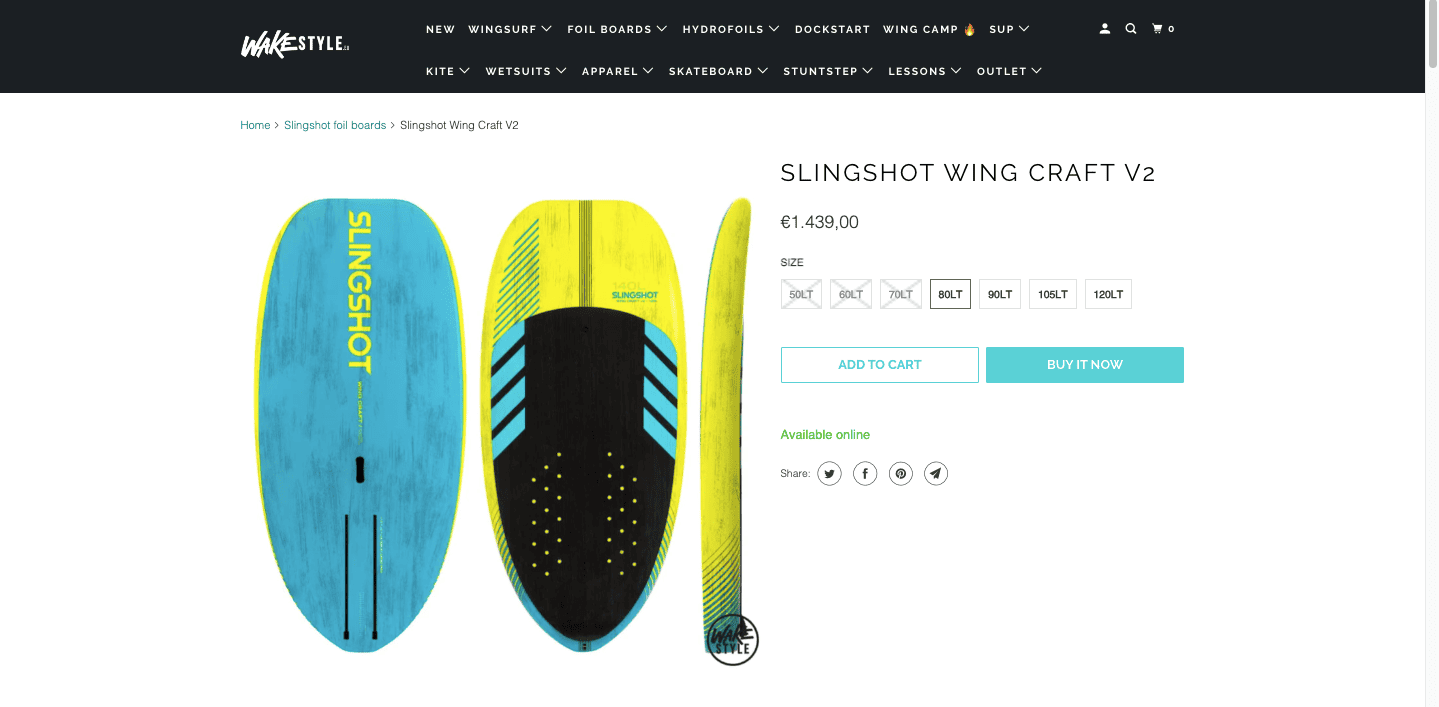
https://www.wake-style.com/collections/slingshot-foil-wing-boards/products/slingshot-wing-craft-v2
Wakestyle foil board caters to riders who enjoy performing aerial tricks and maneuvers. These boards offer a playful and responsive ride, featuring reinforced inserts, a heavy rocker, deep channels, good pop, and serious durability. The unique design of wakestyle foil board allows you to harness the power of your kite effectively for a thrilling ride.
Design:
Wakestyle foil board have a relatively small, light design to facilitate better control and maneuverability while being towed. They are designed to be compatible with standard wakeboard bindings for a secure fit.
Hydrofoil Assembly:
The hydrofoil, consisting of a mast and wings, generates lift as the board is towed forward, allowing the rider to hover above the water. The mast is generally shorter compared to those on other types of foil board, helping riders stay closer to the water’s surface.
Versatility:
A key advantage of wakestyle foil board is their ability to be used in flat water conditions. Unlike surfing or kiteboarding, wake foiling doesn’t depend on waves or wind, which makes it a versatile choice for water sports enthusiasts.
Riding Style:
Wakestyle foiling offers a unique riding experience. Riders can carve, jump, and even perform tricks while hovering above the water. The sensation is quite different from traditional wakeboarding due to the reduced drag and smooth ride.
Skill Level:
Wake foiling can be challenging and requires a certain level of skill to balance on the board while controlling the foil. However, with practice, riders can improve their skills and start performing more advanced maneuvers.
Safety Considerations:
Just like other types of foiling, safety is crucial in wake foiling. Wearing a helmet and impact vest is often recommended, and riders should be mindful of the potential risks involved with the foil, such as sharp edges.
Hydrofoil Board
In essence, is a board designed with an attached hydrofoil—a structure that extends into the water below the board. The hydrofoil consists of a mast (the part attached to the board) and wings (which sit underwater). As the board picks up speed, the hydrofoil generates lift, allowing the board to rise above the water, thereby significantly reducing drag and enabling a smoother, faster ride.
Design:
Its design is unique. It typically features a shorter, volume-dense profile that helps with balance and buoyancy. The board also has a reinforced area or slot called a foil box where the hydrofoil’s mast is attached. The size, shape, and configuration of the hydrofoil itself can be tuned to accommodate different styles of riding and performance levels.
Materials:
Most are constructed from lightweight yet robust materials such as carbon fiber or epoxy. These materials are not only strong enough to handle the stress and strain that the hydrofoil’s lift can place on the board but also light enough to make handling the board easier both in and out of the water.
Versatility:
Hydrofoil boards are versatile in terms of the range of conditions they can handle. Because the board is lifted above the water, choppy conditions and smaller waves have less impact on the ride, making it smoother than traditional boards. With the ability to switch out different hydrofoils (e.g., different mast lengths or wing shapes), riders can tailor their setup to a variety of conditions and preferences.
Skill Level:
Riding this type of board requires a certain level of skill. It’s generally recommended that riders have a good understanding of water conditions and some experience with board sports. That said, with the right equipment and instruction, beginners can get the hang of it. Advanced riders can push the limits of what’s possible on a hydrofoil board, from carving sharp turns to performing aerial tricks.
Safety:
Safety is paramount when it comes to hydrofoil boards. The hydrofoil itself can be dangerous if not handled properly due to its ability to lift the board and rider out of the water. Riders should always wear appropriate safety gear, including a life vest and helmet. Additionally, keeping a safe distance from other riders, swimmers, and obstacles is crucial.
Riding Style:
The riding style on a hydrofoil board is unique. When the board lifts out of the water, riders experience a sensation of “flying” above the water’s surface. It’s smooth and quiet compared to other board sports. The rider’s stance is usually more upright, and turns are carved with the whole body, not just by shifting weight as in traditional surfing or stand-up paddleboarding. With advanced skills, riders can perform jumps, and tricks, and even ride unbroken swells.
Selecting the Right Foil Surf Board
Now that you’re familiar with the different types of foil boards, it’s time to choose the right one for you. The ideal foil board should match your skill level, riding style, and personal preferences.
In the following sections, we’ll guide you through the process of selecting a beginner-friendly foil board and discuss the factors to consider for intermediate and advanced riders.
Beginner Foil Board Selection
As a beginner, your primary focus should be on finding a foil board that offers stability, ease of use, and an appropriate size for your body weight. Beginner-friendly foil board typically feature a larger wing in the front and a shorter mast, providing more lift and a lower aspect ratio for better control in low winds. Examples of beginner-friendly foil board include the GoFoil Maliko, Naish Hover Glide Fwind and Slingshot Hover Glide.
When starting out, it’s essential to practice and familiarize yourself with the sensation of having foot straps on before entering the water. Make sure to adjust the foot straps to fit securely, yet comfortably, and remember that proper stance and balance are crucial for a successful ride.
Intermediate and Advanced Foil Board Selection
For intermediate and advanced riders, the focus shifts toward performance, versatility, and customization options. At this level, you’ll want a foil board that offers a high aspect ratio for more speed, a longer mast for better maneuverability, and a front wing that caters to your preferred riding style. Examples of intermediate and advanced foil board include the Shinn Jackson Sunburner and various models from brands such as Naish, Slingshot, Airush, and North.
When selecting a foil board at this level, it’s essential to consider factors such as the board’s material, construction, and compatibility with various foils. As your skills progress, you may also want to invest in spare parts and accessories to customize your foil board experience further and ensure optimal performance.
Foil Board Components
Understanding the components of a foil board is crucial for making informed decisions about your equipment and maximizing its performance. The primary components of a foil board are the mast, wings, fuselage, and foot straps. Each of these components plays a vital role in the overall performance and feel of the board, so let’s dive deeper into their functions and characteristics.
Mast
The mast is the main structural component of the board and is responsible for connecting the wings. The mast is a critical component of a foil board, as it connects the board to the hydrofoil, providing stability, lift, and responsiveness. Masts are typically made from carbon fiber or aluminum and come in various lengths to accommodate different skill levels and riding styles. Longer masts offer increased maneuverability and lift, while shorter masts provide more stability and control for beginners.
One example of a high-quality mast is the Sonar Carbon Foil Mast, a pre-preg carbon mast designed for performance wing, full foil surfboard, and SUP foiling. Priced at $749.00, the Sonar Carbon Foil Mast is an excellent investment for those seeking a lightweight and robust mast to elevate their water foiling board experience.
Wings
Wings play a crucial role in generating lift, controlling speed, and providing stability during your ride. Front wings and rear wings are typically constructed from carbon fiber and come in a variety of shapes and sizes to suit different skill levels and riding styles. High-aspect ratio wings offer more speed and lift, while low-aspect-ratio wings provide improved stability and control for beginners, especially when the wind drops.
When selecting wings for your wing foiling setup, consider factors such as your skill level, preferred riding style, and the type of conditions you’ll be riding in. Experimenting with different wing shapes and sizes can help you find the perfect balance of speed, lift, and control for your unique needs.
Fuselage
The fuselage is the component that connects the mast and wings, providing a rigid and stable platform for the foil board. Typically designed to be lightweight and durable, ensuring a smooth ride and optimal performance. The design of the fuselage can significantly impact the overall performance of the foil board, as a carefully crafted fuselage can reduce drag, enhance stability, and increase speed.
When selecting a fuselage for your foil board, consider factors such as the material, compatibility with your chosen wings and mast, and the overall performance characteristics you’re seeking. Investing in a high-quality fuselage can make a noticeable difference in the feel and performance of your foil board.
Foot Straps
Foot straps are an essential component of a foil board, providing the rider with the necessary control and comfort during their ride. Available in various styles, including pads, straps, and complete binding systems, a foot strap can be easily adjusted to fit the rider’s foot securely and comfortably.
When selecting foot straps for your foil board, it’s important to consider factors such as your skill level, preferred riding style, and comfort preferences. For beginners, adjustable and comfortable straps are recommended, while more experienced riders may benefit from straps that provide additional support and stability.
Remember to adjust the foot straps to fit securely yet comfortably, and practice with them on the beach before entering the water to become familiar with the sensation and ensure a successful ride.
Foil Board Maintenance and Care
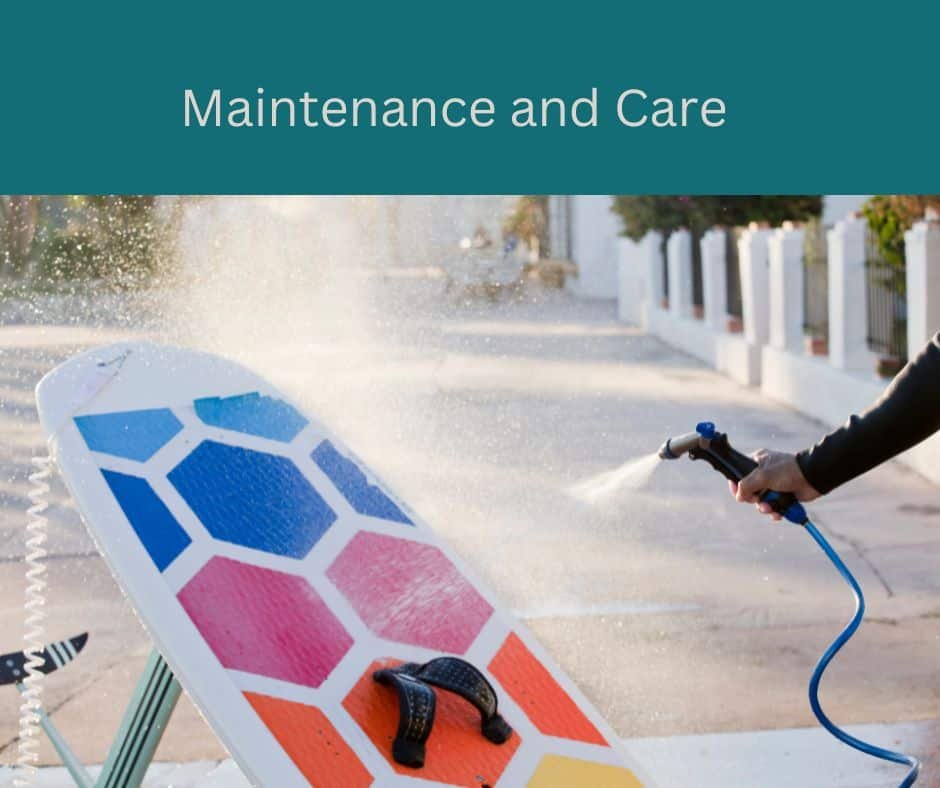
To ensure the longevity and optimal performance of your foil board, proper maintenance and care are essential. In this section, we’ll guide you through the best practices for cleaning, storing, inspecting, and repairing your foil board.
By following these tips and using the same size, you’ll be able to enjoy your foil board for years to come and consistently experience exhilarating rides on the water while foiling.
Cleaning and Storage
Cleaning your foil board after each use is crucial for preventing damage and corrosion. To clean your board, use a toothbrush and toothpaste to scrub all components, followed by a thorough rinse with fresh water to remove any residual salt and debris. Once the board is clean, ensure it is completely dry before storing it in a cool, dry place away from direct sunlight.
In addition to regular cleaning, it’s essential to loosen bolts and apply a coating of lanolin oil or marine grease to maintain your foil board’s performance and durability. By taking care of your board and its components, you’ll extend its lifespan and ensure a consistently smooth and enjoyable ride.
Inspecting and Repairing
Regular inspection of your foil board is necessary to identify any signs of wear and damage, such as loose bolts, corrosion, or damage to the wings and fuselage. To inspect your board, check the rinse-out tracks, foil plate, and screws for corrosion, and ensure all bolts are secure. If you find any worn or damaged parts, replace them to maintain the performance and safety of your foil board.
Performing repairs and replacing damaged components can help you avoid more significant issues down the line and ensure your foil board remains in top shape for many thrilling rides to come. Don’t forget to keep a set of spare screws and other parts handy, especially when traveling, to quickly address any issues that may arise during your foil-boarding adventures.
Tips for Improving Your Foil Board Surfing Skills
Now that you’re equipped with the knowledge about foil board types, components, and maintenance, it’s time to focus on improving your riding skills. In this section, we’ll share tips on stance, balance, transitions, and carving turns, helping you become a more confident and skilled foil boarder.
Stance and Balance
Proper stance and balance are crucial for a smooth, controlled ride on your foil board. To achieve this, keep your weight centered over the board, maintain a 50/50 balance between your feet, and experiment with moving the mast forward until the right balancing point is found. Developing your balance and stance on the beach before entering the water can help you become more familiar with the board and the motions necessary to maintain a suitable stance and balance.
Remember that practice makes perfect, so be patient with yourself as you develop your skills. Over time, you’ll become more comfortable and confident on your foil board, and your ability to maintain proper stance and balance will significantly improve.
Transitions
Mastering transitions is an essential skill for foil boarders, allowing you to smoothly change riding directions and perform turns with ease. To execute a transition, start by leaning your body weight onto the back foot and use the front foot to control the board’s edges. Additionally, utilize the to assist in turning by altering the power and angle of the.
As with stance and balance, practice is key to perfecting your transitions. Spend time on flat water working on your technique and experimenting with different power levels and angles. With time and dedication, you’ll soon be able to execute seamless transitions on your foil board.
Carving Turns
Carving turns is an advanced skill that allows you to change direction with style and precision on your foil board. To execute a carving turn, lean your body weight onto the back foot and use the front foot to control the board’s edges. Additionally, utilize the to aid in turning by adjusting the power and angle of the kite.
As with any advanced skill, mastering carving turns requires practice and patience. Begin by practicing on flat water and gradually progress to more challenging conditions as your confidence and skill level increase. Soon, you’ll be executing impressive carving turns with ease, showcasing your advanced foil boarding abilities.
Brief Introduction about eFoil
It is essentially a surfboard with an electric motor that’s attached to a hydrofoil, which extends below the board into the water. The motor propels the board forward, and as it gains speed, the hydrofoil generates lift, allowing the board to rise above the water’s surface. This results in an exhilarating sensation of “flying” over the water.
Lift foils or Lift eFoil is a leading name in the world of electric hydrofoil surfboards. They have been at the forefront of this exciting new water sport since its inception.Its defining feature is the intuitive handheld Bluetooth controller. It regulates the motor’s power output, allowing riders to control their speed with precision. The waterproof controller also provides vital information about the ride, such as battery life, speed, and system status.
Summary
In this comprehensive guide, we’ve explored the exciting world of foil boarding, covering everything from the different types of foil boards and their components to tips for improving your riding skills and essential maintenance advice. Whether you’re are looking for a beginners guide to start your journey or an experienced rider seeking to refine your skills, this guide has provided you with the knowledge and tools needed to excel in the thrilling sport of foil boarding.
Now it’s time to put this knowledge into practice! Get out on the water, experiment with different boards, components, and techniques, and most importantly, have fun. Remember, practice makes perfect, and with dedication and persistence, you’ll soon be gliding effortlessly above the water, experiencing the exhilaration that only foil boarding can provide.
Frequently Asked Questions
What is the point of a foil board?
Foil boards provide a unique riding experience, allowing users to feel as if they’re floating on top of the water. They offer a superior ride as well as added safety for surfers, who don’t need to be moving to stand up or require a big push to start off.
Foil boards are becoming increasingly popular among surfers as they provide a more stable and comfortable ride than traditional surfboards. They also require less energy to stay afloat, making them ideal for long distances.
Is foil boarding easier than surfing?
Foil surfing is considered to be one of the challenging water sports and it is generally recommended that those looking to try it out should have experience in wave sports beforehand.
It is also advisable to establish a base level of proficiency on a regular surfboard before attempting foil surfing.
Why do foil boards cost so much?
Foil board are in high demand, but limited supply due to changing designs and the cost of research, development, testing, and prototyping.
This combination results in higher prices for eFoil board.
How hard is it to Foilboard?
Foil surfing may appear effortless, but it is more challenging than traditional surfing when you’re just beginning. Dedication and patience are required to master the balance and techniques of foilboarding.
What is the best foil board to learn on
The answer depends on the skill level of the rider, as well as their riding goals and conditions they plan to ride in. New riders should consider a freeride board, as these are designed for general riding and provide more stability than other types of foil boards. As the rider’s skills improve, they can move on to race, surf, or wakestyle boards. No matter what type of board is chosen, safety should always be the top priority!
How much does an eFoil cost?
What are the costs of using the e-foil? Complete Fil Configurations vary between $3k and $12k in total cost. Price depends on the type of surf you desire.



